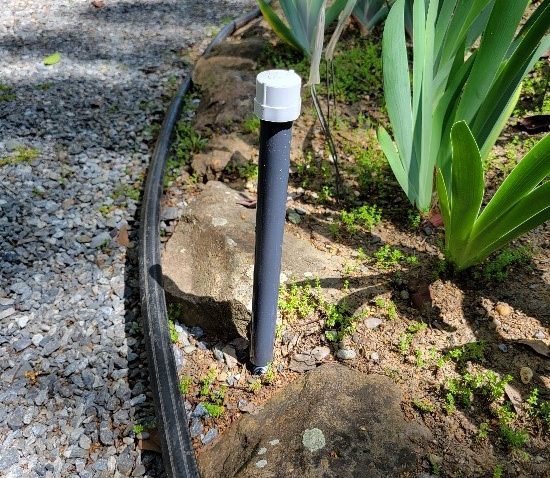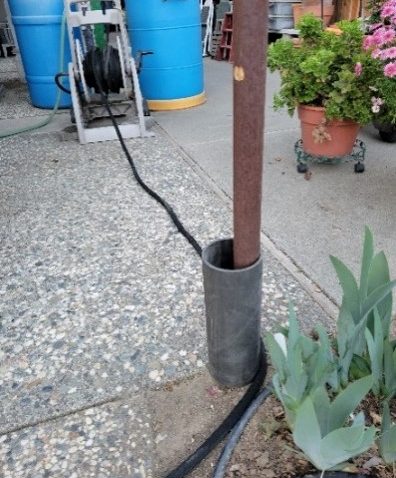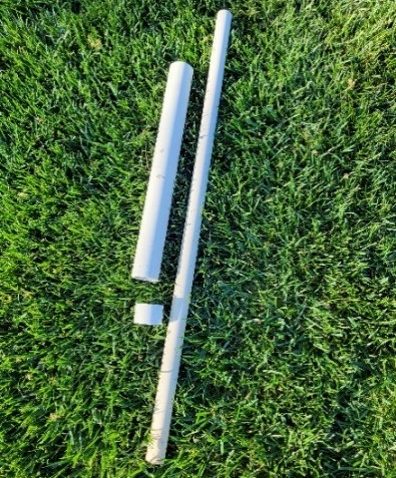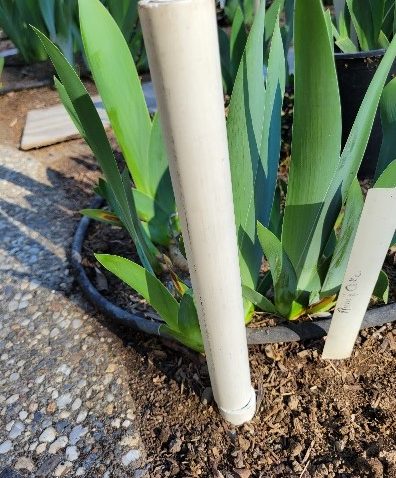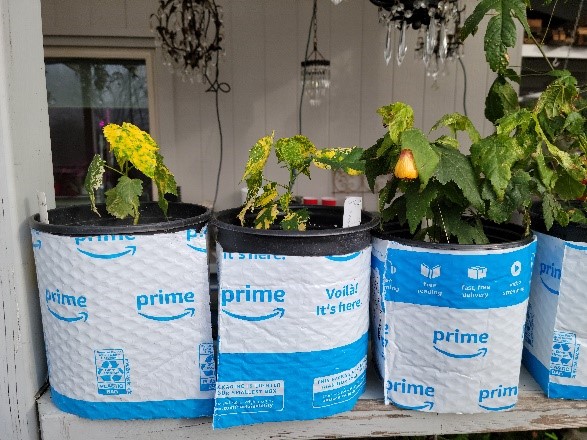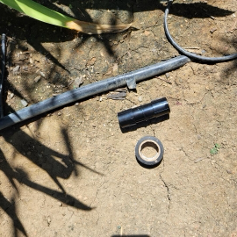
Drip System Repair
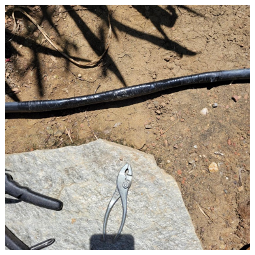 If you have a drip system in your garden, you will sooner or later have leaks. Most commonly these are caused by severing a half inch supply line with a shovel, but there are numerous other causes like critter damage. The tubing shown in the first photo was damaged by sun exposure over many years that left it brittle, and then being stepped on which led to severe cracking. You can see that I solved it with multi-layers of electrician’s tape. Surprisingly, that worked for months, but when several leaks appeared, additional tape did not stem the flow.
If you have a drip system in your garden, you will sooner or later have leaks. Most commonly these are caused by severing a half inch supply line with a shovel, but there are numerous other causes like critter damage. The tubing shown in the first photo was damaged by sun exposure over many years that left it brittle, and then being stepped on which led to severe cracking. You can see that I solved it with multi-layers of electrician’s tape. Surprisingly, that worked for months, but when several leaks appeared, additional tape did not stem the flow.
A trip to Home Depot revealed something new. Rather than having a bunch of bins for fittings of slightly different tube sizes, there were only 3—straight, elbow, and T. This new design accommodates all variations of “half inch” tubing. So, I used 2 couplings to insert a new 3 foot section of tubing and buried it this time.
 The one thing I want to caution you about is the amount of strength required to force tubing into the coupling. One of the joints leaked. I foolishly tried to solve the leak with tape. Finally, I realized that all I had to do is force the tubing farther into the coupling. Duh. Now, I don’t mean to discourage your use of electrician’s tape. Generally, it will solve minor leaks. Just remember to really stretch the tape tightly as you wind it around the tubing. The second photo shows a new coupling and a handy small roll of tape next to an old repaired leak that has worked well.
The one thing I want to caution you about is the amount of strength required to force tubing into the coupling. One of the joints leaked. I foolishly tried to solve the leak with tape. Finally, I realized that all I had to do is force the tubing farther into the coupling. Duh. Now, I don’t mean to discourage your use of electrician’s tape. Generally, it will solve minor leaks. Just remember to really stretch the tape tightly as you wind it around the tubing. The second photo shows a new coupling and a handy small roll of tape next to an old repaired leak that has worked well.
-Stan (Just call me Dr. Drip)
P.S. You cannot use these couplings to repair severed soaker hose. The hose walls are too thick to fit into the coupling. You will need to use an internal barbed coupling.

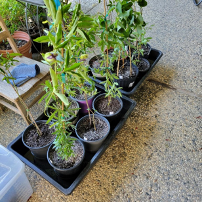
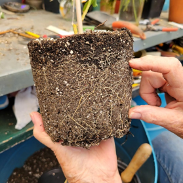 So, I guess the lesson for you is this: If you let a potted plant get really dry, watering so that the
So, I guess the lesson for you is this: If you let a potted plant get really dry, watering so that the 

